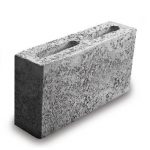What are Septic Tanks ?
Septic tanks are key component of a septic system, a decentralized wastewater treatment system commonly used in areas without centralized sewer systems. It is designed to collect, treat, and dispose of household wastewater on-site. The main components include the septic tank itself, a drain field, and the soil.
Features of a Good Septic Tank:
- Size: Adequate capacity to handle the wastewater load of the household. Generally, tanks range from 1,000 to 2,000 gallons.
- Material: Common materials include concrete, fiberglass, and plastic. Durability and resistance to corrosion are important considerations.
- Baffles: Presence of inlet and outlet baffles to prevent solids from directly entering the drain field.
- Access Points: Access ports or covers for inspection and maintenance purposes. Proper sealing to prevent odors and gases from escaping.
- Effluent Filter: Some tanks have effluent filters to trap solids before they reach the drain field.
- Water tightness: A good septic tank must be watertight to prevent groundwater infiltration and contamination.
Importance of Septic Tanks:
- Wastewater Treatment: Septic tanks treat and break down
organic matter in wastewater, allowing liquid effluent to be safely released
into the soil. - Environmental Protection: Properly functioning septic
systems protect groundwater and surface water from pollution by removing
harmful contaminants. - Public Health: Adequate wastewater treatment prevents the
spread of diseases and protects public health by ensuring that harmful
pathogens are eliminated. - Cost-Effective: Septic systems can be a cost-effective
alternative in areas where connecting to a centralized sewer system is
impractical or expensive. - Property Value: Well-maintained septic systems can enhance
property values by ensuring a safe and healthy living environment.
Understanding the Primary Purpose of the Septic Tank:
A septic tank serves as a crucial component in a decentralized sewage treatment system, commonly used in areas without access to centralized sewer systems. Its primary purpose is the safe and efficient treatment of household wastewater. The tank collects, separates, and treats sewage, allowing the effluent to be safely discharged into the surrounding soil.
The process begins with wastewater entering the septic tank, where solids settle at the bottom, forming sludge, while lighter materials like grease and oils float to the top as scum. The clarified liquid, known as effluent, then exits the tank and is dispersed into the soil through a drain field. The soil acts as a natural filter, further treating the effluent before it reenters the groundwater system.
Advantages of Septic Tanks:
- Cost-Effective: Septic systems are often more cost-effective than connecting to a centralized sewer system, especially in rural or remote areas where the installation of sewer lines may be impractical.
- Independence: Homeowners with septic tanks enjoy a level of independence from municipal utilities. They are not reliant on a centralized sewage infrastructure, providing autonomy in wastewater management.
- Environmental Friendliness: When properly designed, installed, and maintained, septic systems can be environmentally friendly. They allow for the natural treatment of wastewater, reducing the impact on water bodies and ecosystems.
- Low Maintenance: With regular maintenance and proper care, septic tanks can have a long lifespan. Routine pumping and inspections help prevent issues and ensure efficient operation.
- Flexibility in Location: Septic systems can be installed in various geographical locations, making them suitable for both rural and suburban settings where centralized sewer systems may not be feasible.
- Efficient Treatment: The separation of solids and the natural treatment of effluent in the drain field contribute to the efficient and effective treatment of household wastewater.
Cost Considerations for Septic Tanks in Ghana:
The cost of a septic tank in Ghana can vary based on factors such as size, material, and additional features. On average, a basic septic tank in Ghana may range from GHC 3,000 to GHC 6,000 or more. However, it’s crucial to note that the overall cost also includes expenses related to excavation, installation, and any necessary permits.
For a more accurate estimate, it is recommended to consult with local suppliers or septic system professionals who can assess the specific requirements of the property and provide tailored cost estimates based on the size of the tank and the complexity of the installation.
Dimensions & standard size for septic tanks:
The dimensions and standard sizes of septic tanks can vary
depending on factors such as local regulations, the number of bedrooms in a household, and the expected wastewater flow. However, here are some general guidelines for septic tank dimensions and standard sizes:
1. Capacity and Size:
- Household Size: The size of a septic tank is often determined by the number of bedrooms in a household, as this correlates with the expected volume of wastewater generated. Common sizes range from 1,000 to 1,500 gallons for a typical three-bedroom house.
- Flow Rate: The flow rate of wastewater into the tank is another crucial factor. Larger households or those with higher water usage may require a larger septic tank.
2. Shape and Configuration:
- Rectangular or Cylindrical: Septic tanks can be rectangular or cylindrical in shape. Rectangular tanks are more common for residential use, while cylindrical tanks are often used in commercial or industrial settings.
- Single or Two Compartments: Septic tanks are typically either single-compartment or two-compartment. Two-compartment tanks provide better separation of solids and liquids, improving the treatment process.
3. Depth and Height:
- Depth: The depth of septic tanks can vary, but they are typically buried underground to a depth of about 4 to 6 feet.
- Height: The height of the tank is influenced by factors such as inlet and outlet pipe locations. Standard heights often range from 5 to 8 feet.
3. Inlet and Outlet Positions:
- Inlet Depth: The inlet pipe is usually set at a depth that allows wastewater to enter the tank without disturbing the settled solids.
- Outlet Depth: The outlet pipe is positioned at a level that ensures the clarified effluent flows out of the tank for further treatment in the drain field.
4. Material:
- Concrete or Plastic: Septic tanks are commonly made of concrete or high-density polyethylene (HDPE) plastic. Concrete tanks are durable but may be heavier and more challenging to install. Plastic tanks are lightweight and resistant to corrosion.
It is crucial to adhere to local regulations and guidelines when determining the appropriate size and configuration of a septic tank for a specific property. Local health departments or regulatory authorities often specify the minimum requirements for septic systems to ensure proper wastewater treatment and environmental protection. Consulting with a qualified septic system professional can also provide tailored guidance based on local conditions and specific needs.
Maintenance Tips:
- Regular Pumping: Periodic pumping is essential to remove accumulated solids and prevent clogging of the drain field.
- Water Conservation: Reducing water usage helps maintain the balance of the septic system and prolong its lifespan.
- Proper Waste Disposal: Avoid flushing non-biodegradable items or harmful chemicals into the system.
- Inspections: Regular inspections of the tank and drain field are crucial for identifying and addressing potential issues.
- Landscaping Considerations: Avoid planting trees or shrubs with extensive root systems near the septic system to prevent damage.




